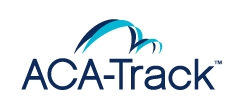Imagine leaving your home, dreaming of a better life. Picture yourself in Canada, providing care and building a secure future. This is the reality for many caregivers who’ve successfully immigrated through the Canada Caregiver Program. They contribute so much to Canadian families.
The Canada Caregiver Program offers a path to permanent residency for qualified caregivers. It’s a big opportunity. This article is your go-to guide. We’ll explore the program. Plus, you’ll learn how to find jobs and navigate the immigration process smoothly. Canada needs dedicated caregivers. The demand is growing.
Understanding the Canada Caregiver Program
The CANADA CAREGIVER VISA
Program has two main pathways. These are the Home Child Care Provider Pilot and the Home Support Worker Pilot. Each has its own rules. Both offer a chance to gain permanent residency. Let’s examine each one.
Home Child Care Provider Pilot
The Home Child Care Provider Pilot helps those who care for children in their own home. There are key things to know. You’ll need certain education levels. Also, you need to prove your language skills. Work experience matters too. There’s a limit to how many people can apply HOW TO EXTEND VIETNAM VISA
.
Here’s a simple look at the main needs:
| Requirement | Details |
| Education | Canadian high school or equivalent |
| Language Proficiency | CLB 5 in English or French |
| Work Experience | 2 years in-home child care (within 36 months) |
| Job Offer | Full-time job offer |
Make sure you meet these requirements. It’s very important for your application.
Home Support Worker Pilot
The Home Support Worker Pilot focuses on those who care for seniors or people with disabilities. It has different focuses from the Home Child Care Provider Pilot. Job duties and NOC codes matter here. These codes classify your job.
Your education is also checked. This is called an Educational Credential Assessment. An ECA shows your education is equal to Canadian standards. This is a crucial step.
Finding Caregiver Jobs in Canada
Finding a real job offer is key to your application. You can use online job boards. Recruitment agencies can help too. Networking might open doors.
Top Job Boards for Caregivers
Many websites list caregiver positions. Here are a few:
- Indeed
- Job Bank
Your application needs to stand out. Showcase your skills and experience. Highlight what makes you the best choice.
Working with Canadian Recruitment Agencies
Recruitment agencies can make your job search easier. They connect you with employers. But there are pros and cons. Reputable agencies won’t ask for upfront fees. Watch out for red flags. If an agency asks for money before helping you, that’s a bad sign.
Navigating the Immigration Process
Applying for immigration can seem hard. Here’s a step-by-step guide. Gather your documents. Know the processing times. Be ready for challenges.
Preparing Your Application Package
A complete application is essential. You’ll need many documents. These include IDs and proof of your experience. Get translations if needed. Notarize documents as required. This makes them official. Small mistakes can lead to rejection.
Dealing with Processing Delays
Sometimes, applications take longer than expected. Stay informed. Check your application status often. Contact IRCC if you need updates. Stay patient.
Settling in Canada as a Caregiver
Moving to a new country is a big change. Find a place to live. Learn about healthcare. Build a support system.
Finding Accommodation
You have housing choices. You could live with your employer. Or, you can rent an apartment. Websites like Craigslist and Kijiji list rentals. Know your tenant rights in Canada.
Accessing Healthcare and Social Services
Apply for a health card when you arrive. This gives you healthcare coverage. Learn about social services for newcomers. These services can help you adjust.
Conclusion
Immigrating to Canada as a caregiver takes work. Research is key. Preparation is essential. This guide helps. Start your application today. Your Canadian dream is within reach.





